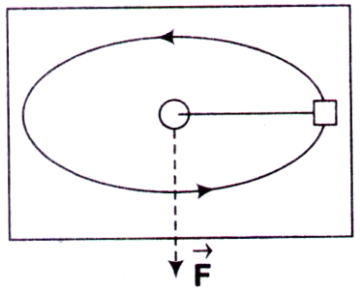A rigid body is rotating about its centre of mass; fixed at origin with an angular velocity $$\overrightarrow \omega $$ and angular acceleration $$\overrightarrow \alpha $$. If the torque acting on it is $$\overrightarrow \tau $$ and its angular momentum is $$\overrightarrow {\bf{L}} $$, then the rate of change of its kinetic energy is
A. $$\frac{1}{2}\overrightarrow \tau \cdot \overrightarrow \omega $$
B. $$\frac{1}{2}\overrightarrow {\bf{L}} \cdot \overrightarrow \omega $$
C. $$\frac{1}{2}\left( {\overrightarrow \tau \cdot \overrightarrow \omega + \overrightarrow {\bf{L}} \cdot \overrightarrow \alpha } \right)$$
D. $$\frac{1}{2}\overrightarrow {\bf{L}} \cdot \overrightarrow \alpha $$
Answer: Option C
A. increases till mass falls into hole
B. decreases till mass falls into hole
C. remains constant
D. becomes zero at radius r1, where 0 < r1 < r0
A. $$\frac{c}{3}$$
B. $$\frac{{\sqrt 2 }}{3}c$$
C. $$\frac{c}{2}$$
D. $$\frac{{\sqrt 3 }}{2}c$$
The Hamiltonian corresponding to the Lagrangian $$L = a{{\dot x}^2} + b{{\dot y}^2} - kxy$$ is
A. $$\frac{{{p_x}^2}}{{2a}} + \frac{{{p_y}^2}}{{2b}} + kxy$$
B. $$\frac{{{p_x}^2}}{{4a}} + \frac{{{p_y}^2}}{{4b}} - kxy$$
C. $$\frac{{{p_x}^2}}{{4a}} + \frac{{{p_y}^2}}{{4b}} + kxy$$
D. $$\frac{{{p_x}^2 + {p_y}^2}}{{4ab}} + kxy$$
A. circular
B. elliptical
C. parabolic
D. hyperbolic


Join The Discussion